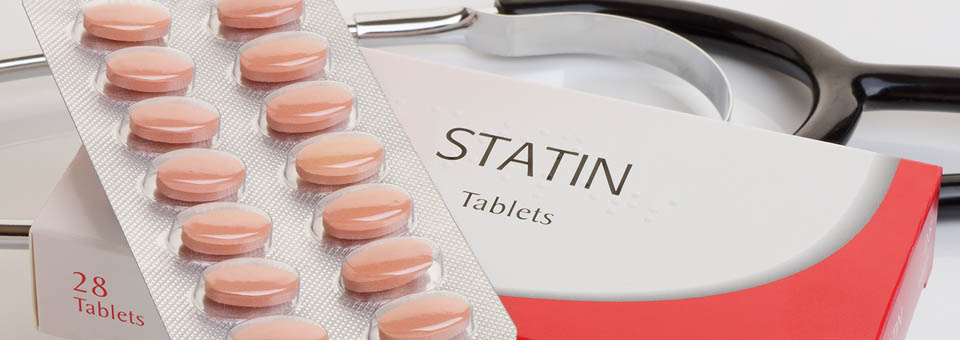Like most people in the developed world, chances are a doctor has either cajoled, persuaded, scared, or even bullied you into taking cholesterol-lowering statins.
I’ve been warning you about these Big Pharma abominations for decades now.
This stance turned me into a renegade among conventional doctors, but I feel I’ve saved lives – just by getting patients to stop taking these dangerous heart meds.
The whole statin phenomenon is just another factor in the old “low-fat, low cholesterol, high-carb” bull that continues to be promoted as healthy. And it’s still causing increased rates of heart disease, obesity, diabetes, and even Alzheimer’s around the world.1
Now, the latest scientific research linked statins to more serious diseases: 2,3
- Skin cancer (squamous cell carcinoma) tumors in men
- Serious liver dysfunction
- Acute kidney failure
- Serious myopathy (disease of the muscles)
- Cataracts
Even the previously-known side effects, like fatigue, muscle pain, and rhabdomyolysis (when muscle cells burst), are enough to tell me you don’t want to go anywhere near these drugs.
The most common peril is that statins don’t just lower LDL, they also lower your HDL (good cholesterol) levels — and that raises your risk of heart disease and heart attacks.4
The truth is you don’t need statins. I know that may sound jarring, but cholesterol doesn’t cause heart disease. Cholesterol is what heart disease acts upon… Not the cause.
Multiple studies prove it – including the landmark Framington Heart Study, which found no link between high cholesterol and increased heart disease risk.5
Only Big Pharma needs statins because they generate billions in revenue for them. In fact, statins are the most profitable class of drug in medical history.
Energize Your Heart in 3 Easy Steps
The good news is that for every statin, there are safe, proven, and inexpensive natural alternatives your cardiologist
will never tell you about.I recommend three powerful heart nutrients:
-
- Nutrient # 1 – Docosahexaenoic acid (DHA): This omega-3 fatty acid eliminates the need for statins and has been proven to raise HDL. It’s a potent defender against heart disease.6 One study discovered that if you take just 1.5 grams of DHA per day for a few weeks, your HDL can shoot up by 7%.7 No Big Pharma drug can do that.The best food sources of DHA are wild, cold-water fish, like pollock, salmon, tuna, trout, and herring. I also advise topping up with a supplement. Get at least 500 mg of DHA and 60 mg of the EPA form of omega-3 in a combination of squid and krill oil.
-
- Nutrient # 2 – Coenzyme Q10: This nutrient provides fuel for your mitochondria — the tiny power plants inside each of your cells – in your heart. Statin drugs are the biggest killer of CoQ10 levels. Supplementing with CoQ10 can bring immediate, often-lifesaving benefits. Studies show that taking CoQ10 daily reduces arrhythmias, improves your heart’s pumping ability, and reduces your risk of death from heart attacks. CoQ10 also eases angina pectoris, lowers blood pressure, and your atherosclerosis risk.8,9,10,11The best sources of CoQ10 are organic beef, chicken and fish. If you’re taking statins, your levels are likely to be dangerously low, so I recommend a supplement of at least 100 mg a day. And look for the ubiquinol form of CoQ10. It’s eight times more powerful than the more common ubiquinone form.
- Nutrient # 3 – PQQ: While CoQ10 does a great job of squeezing more power from your mitochondria, it does nothing for the mitochondria you’ve lost. That’s where the little-known nutrient pyrroloquinoline quinone, or PQQ, comes in. PQQ triggers your heart cells to build healthy new mitochondria, which produce more fuel so your heart pumps with more energy.Good sources of PQQ are kiwi fruit, sweet green peppers, carrots, potatoes, cabbage, sweet potatoes, and bananas. But it’s often hard to get enough PQQ from natural sources. I recommend a supplement. Take 10 mg of PQQ daily with your CoQ10.
To Your Good Health,
![]()
Al Sears, MD, CNS
References:
1. Willette AA, et al. “Association of Insulin Resistance with Cerebral Glucose Uptake in Late Middle–Aged Adults at Risk for Alzheimer Disease.” JAMA Neurology, 2015; DOI: 10.1001/jamaneurol.2015.0613
2. Hippisley-Cox J, et al. “Unintended effects of statins in men and women in England and Wales: population-based cohort study using the QResearch database.” BMJ 2010; 340: c2197
3. Lee EB, et al. “Statin use may be a predictor of larger and more aggressive tumor characteristics in squamous cell carcinoma [abstract].” Presented at: American Academy of Dermatology Conference 2021; April 23-25, 2021. Abstract 28086.
4. Wilson P, et al. “High density lipoprotein cholesterol and mortality: The Framingham Heart Study.” Arteriosclerosis. 1988 Nov-Dec;8(6):737-41.
5. Wilson P, et al. “High density lipoprotein cholesterol and mortality: The Framingham Heart Study.” Arteriosclerosis. 1988 Nov-Dec;8(6):737-41.
6. Bernstein A, et al “ A Meta-Analysis Shows at Docosahexaenoic Acid … Increases HDL-Cholesterol … in Persons without Coronary Heart Disease.” J Nutr. 2012;142(1):99-104.
7. Egert S, et al. “Dietary alpha-linolenic acid, EPA, and DHA have differential effects on LDL fatty acid composition but similar effects on serum lipid pro les in normolipidemic humans.” J Nutr. 2009;139(5):861-8.
8. Ghirlanda, et al., “Evidence of plasma CoQ10-lowering effect of HMG-COA reductase inhibitors: a double-blind, placebo-controlled study,” Journal of Clinical Pharmacology. 1993 Mar; 33(3):226-229.
9. B.E. Burke, et al. “Randomized, Double-Blind Placebo-Controlled Trial of Coenzyme Q10 in Isolated Systolic Hypertension,” Southern Medical Journal. November 2001; 94(11): 1112-7.
10. T. Kamikawa, et al., “Effects of Coenzyme Q10 on Exercise Tolerance in Chronic Stable Angina Pectoris,” American Journal of Cardiology (August 1, 1995) 56(4): 247-251.
11. R.B. Singh, et al., “Randomized, Double-Blind Placebo-Controlled Trial of Coenzyme Q10 in Patients with Acute Myocardial Infarction,” Cardiovascular Drugs and Therapy. September 1988; 12(4): 347-53.

